We were short on numbers today as many of our regulars were involved in another activity elsewhere. But we carried on regardless.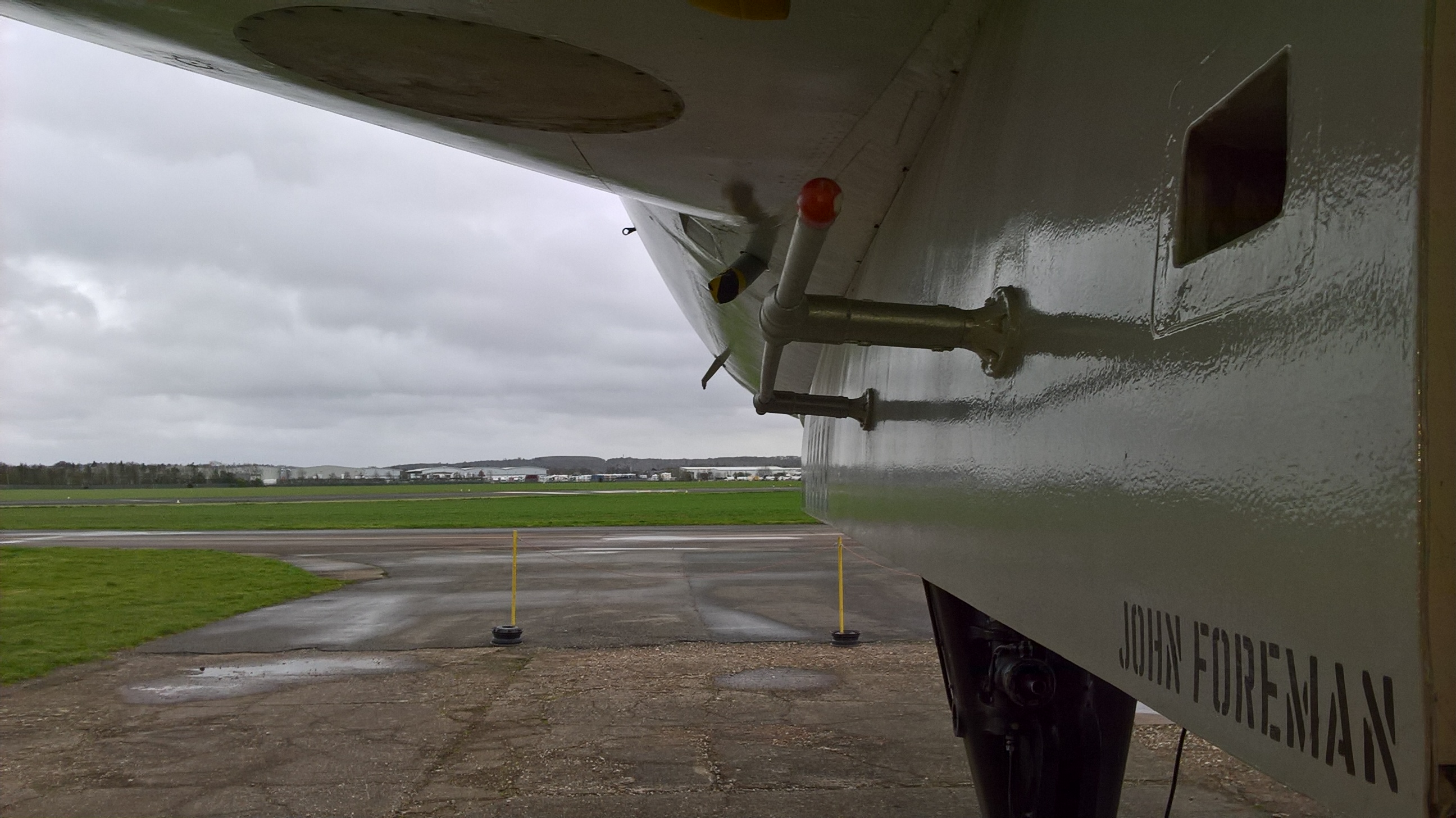
Today we set about finding the leak that saw fuel running out of the port wing following the testing of the No.1 Port tank. Three panels were removed in the main undercarriage bay to reveal the fuel pipes 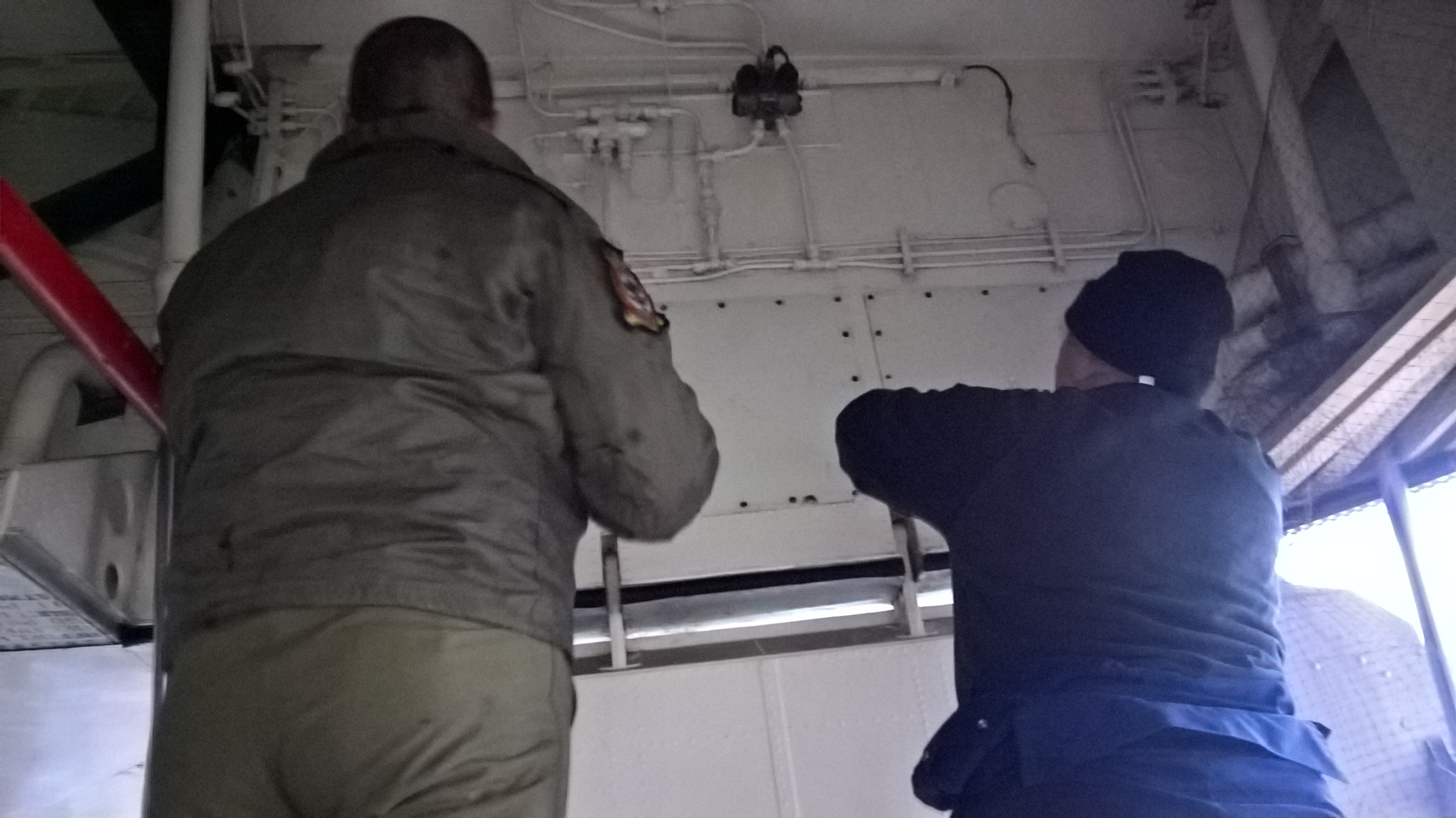 running along that side of the aircraft. With the wind being as strong as it was standing on the riser in the undercarriage bay was a half and half job, half frozen and half warm. Once the panels were removed the relevant joint was revealed as well as the complexity of other refuelling pipes. The joint was stripped and
running along that side of the aircraft. With the wind being as strong as it was standing on the riser in the undercarriage bay was a half and half job, half frozen and half warm. Once the panels were removed the relevant joint was revealed as well as the complexity of other refuelling pipes. The joint was stripped and 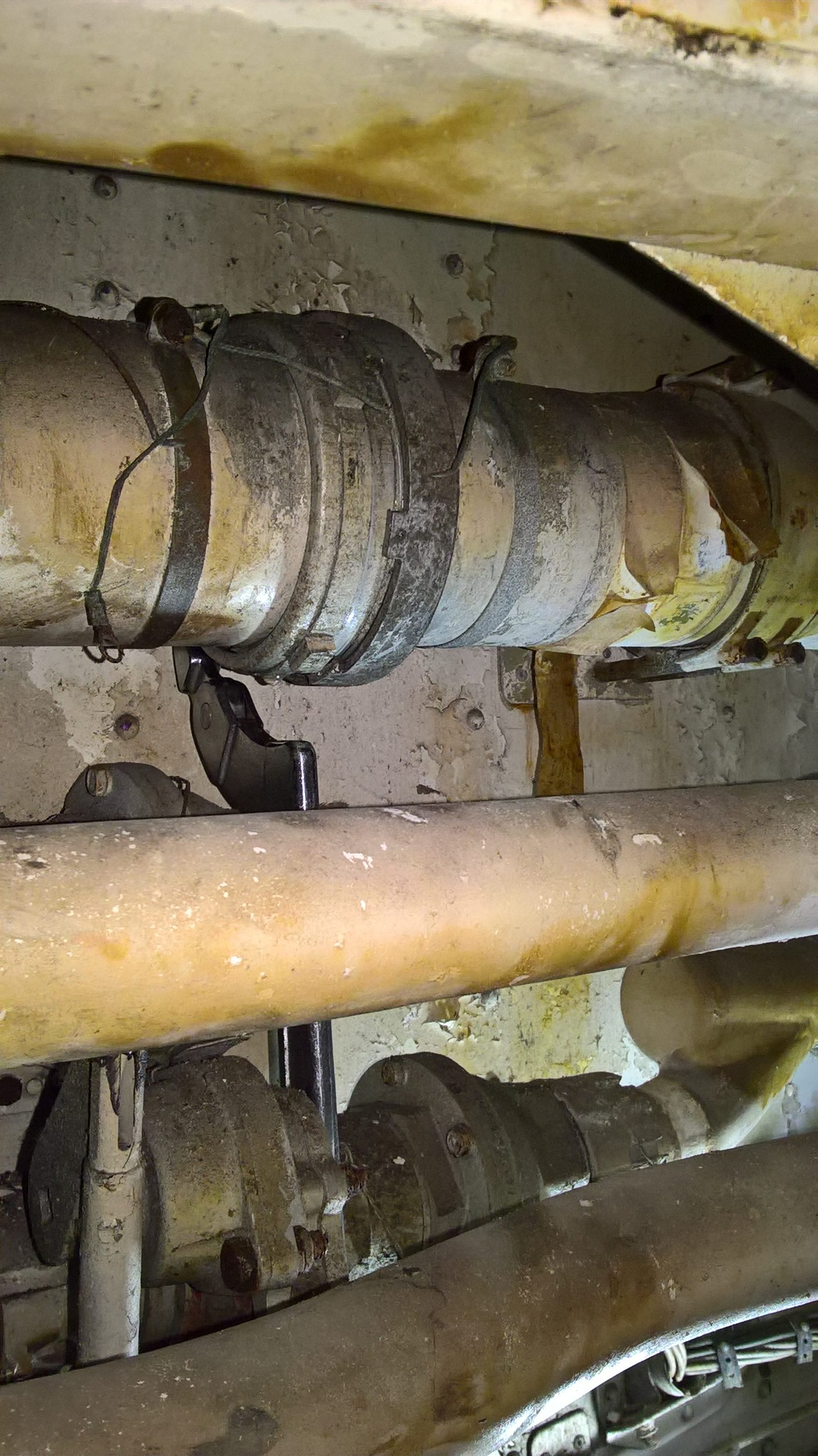 reassembled, and tightened to ensure a non-drip finish, pressure applied by the transfer pump from No.1 Port tank revealed no further leak.
reassembled, and tightened to ensure a non-drip finish, pressure applied by the transfer pump from No.1 Port tank revealed no further leak.
The team moved to the nose-wheel bay where further work was carried out on the No.1 port pump plate to cure the leaks that had been found during the previous Saturday. The tank terminal block, which allows the signals from the contents gauging system to exit the tank space was loosened and bonding agent applied to the gasket faces, after which the plate was tightened down. The test valve required some looking at as this had leaked during testing, this valve is used to drain some fuel from the tank to check for water contamination, the rubber seal within the valve was found to have some grit contamination and was cleaned before being replaced. The drip trays that are fitted below the tank plates were also serviced and the access ports for the above test valves were opened for the first time since the aircraft landed at Wellesbourne. The output pipe junction from the main pump had also leaked during testing and was tightened to prevent a further leak.
In other places around the pan work was being carried out on the Sentinel tug to fix the problems with the exhaust manifold. New 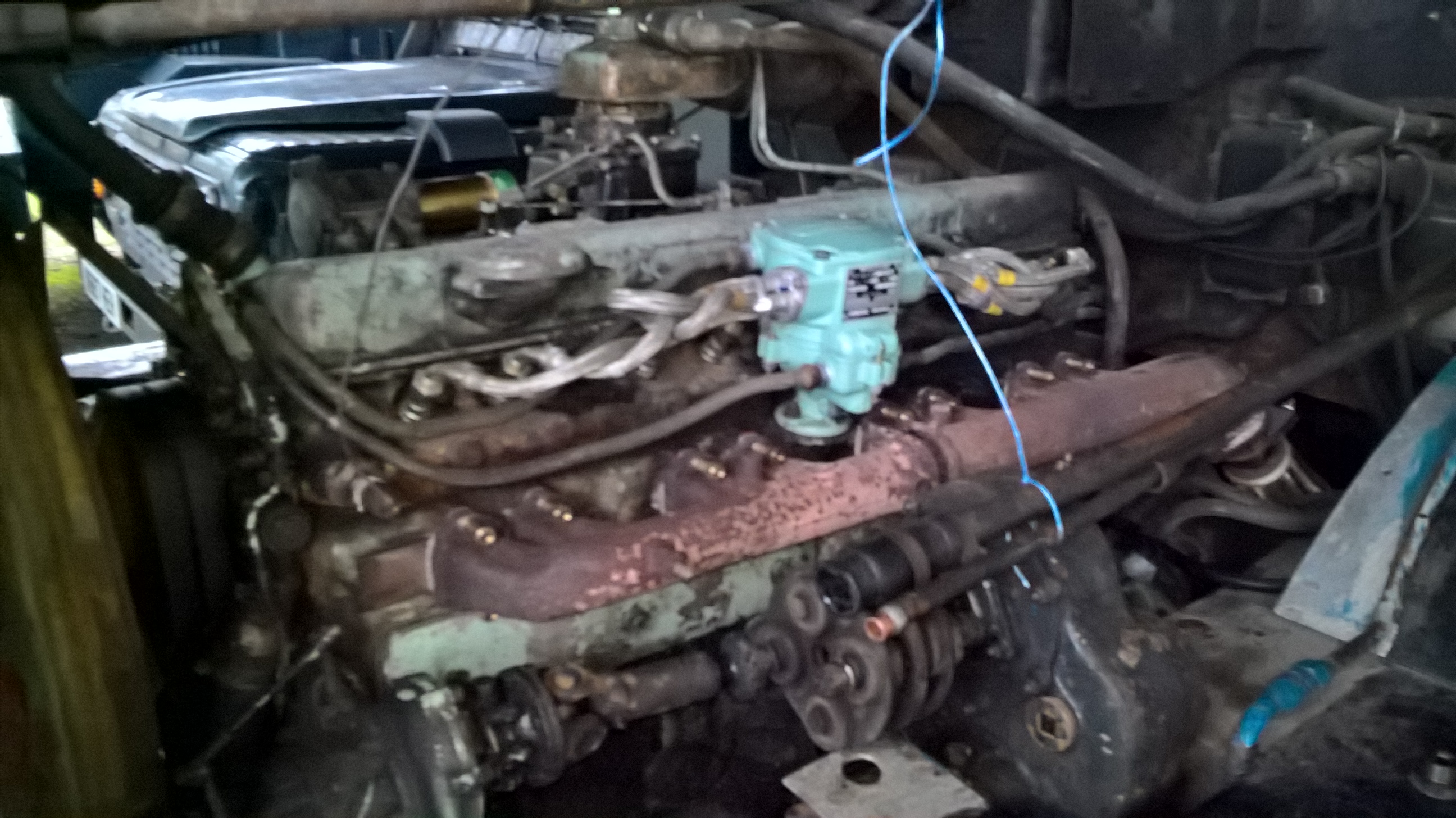 studs were installed in the head and where necessary helicoils inserted to repair damaged threads, by the end of the day the exhaust manifold had been reattached and the engine tested sounding much better than it has for ages. Items that had been
studs were installed in the head and where necessary helicoils inserted to repair damaged threads, by the end of the day the exhaust manifold had been reattached and the engine tested sounding much better than it has for ages. Items that had been 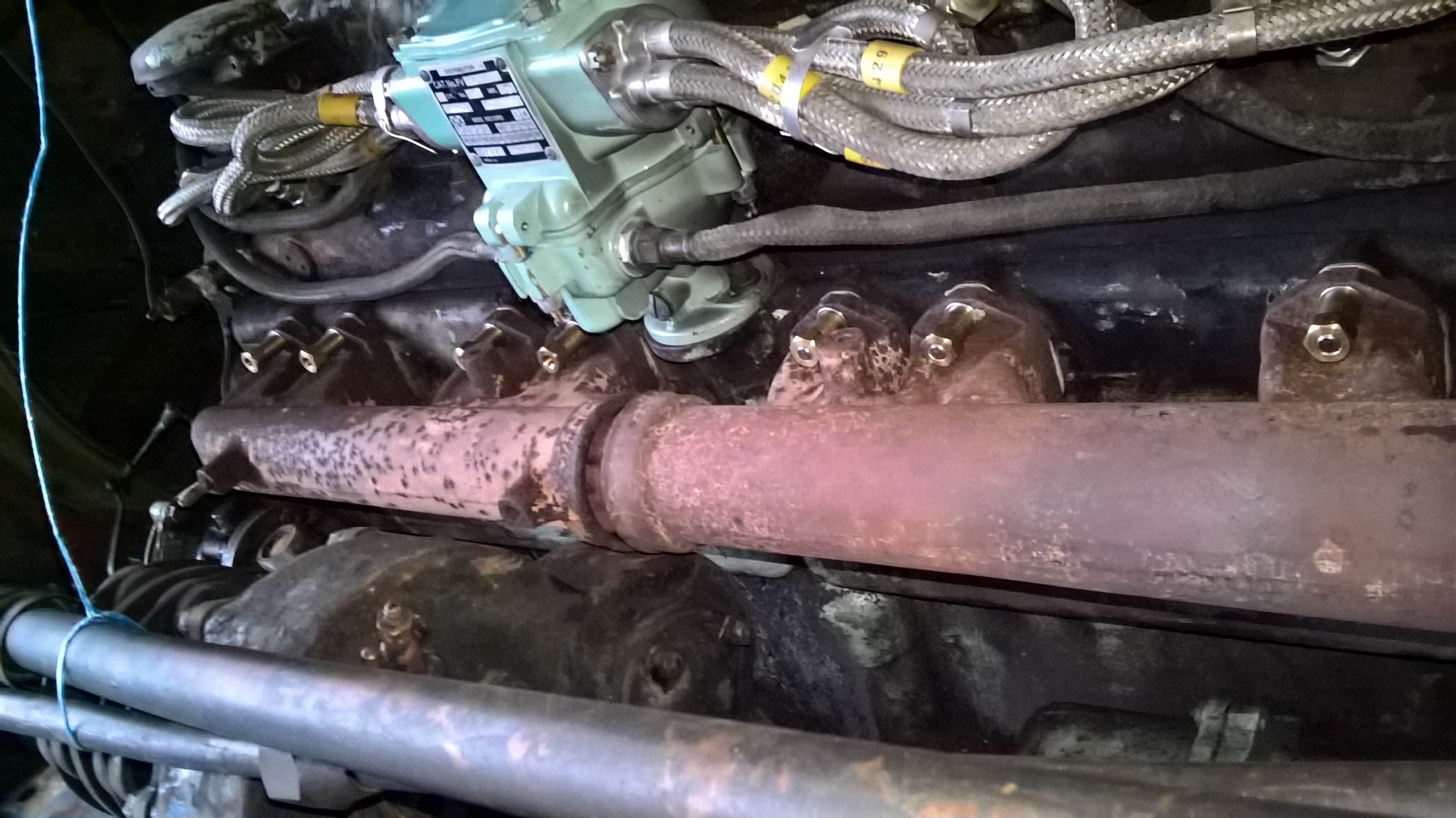 removed to allow access to the head were replaced.
removed to allow access to the head were replaced.
As part of a normal Saturday we had a number of walk-ins during the morning and in the afternoon an organised visit from the Kings Cliffe Old Blokes Club. Most of the talks for this tour took place 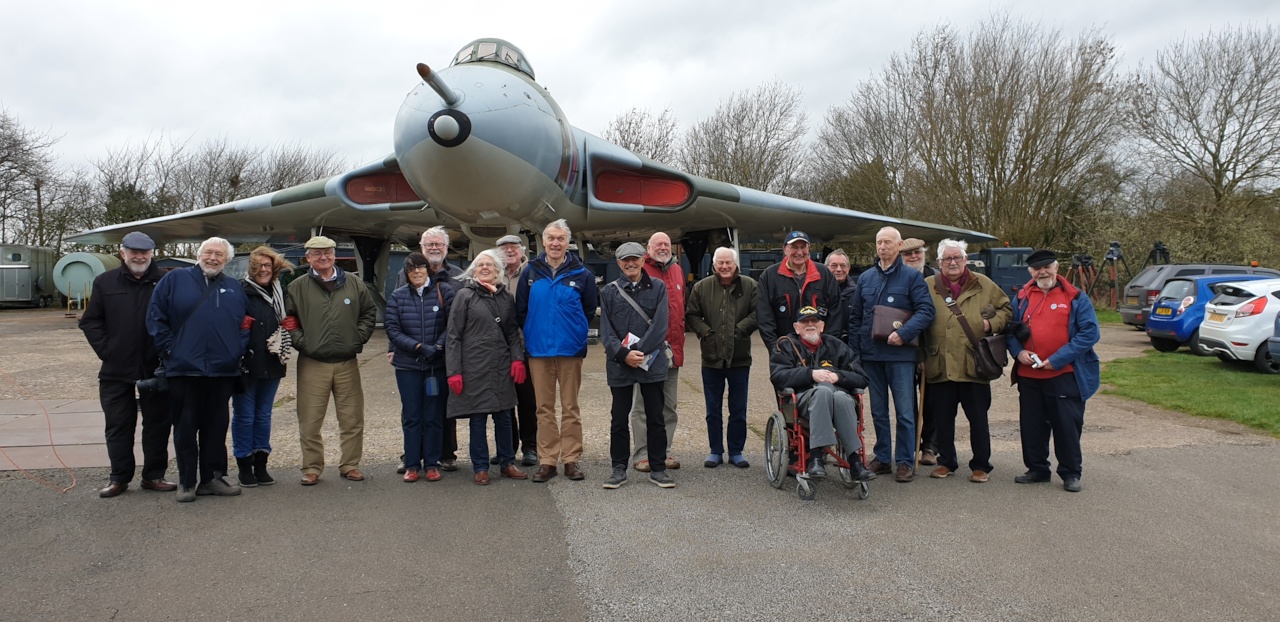 under cover due to the windy situation around the aircraft, we took advantage of accommodation in the South Warwickshire Flying School, and Len used the conservatory for his bomb talk. The group included 2 Vulcan aircrew, including Jim Vinales who was the Nav Plotter aboard XM610, and baled out when it crashed at Wingate.
under cover due to the windy situation around the aircraft, we took advantage of accommodation in the South Warwickshire Flying School, and Len used the conservatory for his bomb talk. The group included 2 Vulcan aircrew, including Jim Vinales who was the Nav Plotter aboard XM610, and baled out when it crashed at Wingate.
Photos by Tim and Len.
